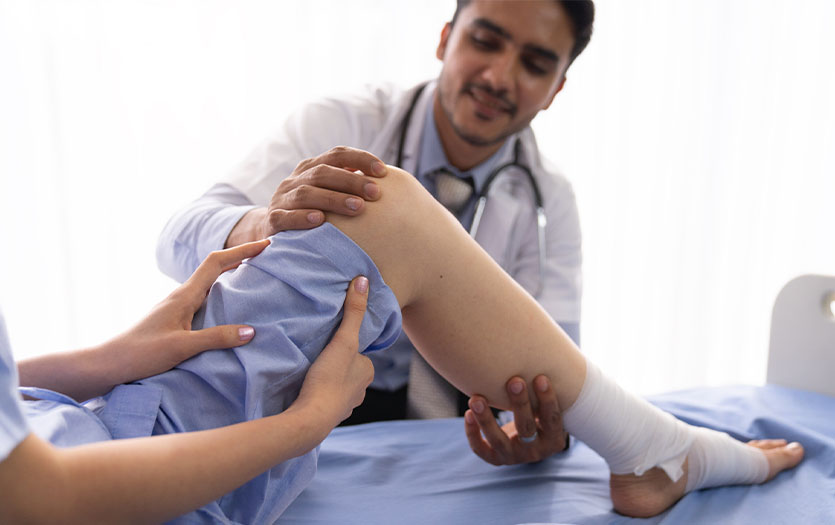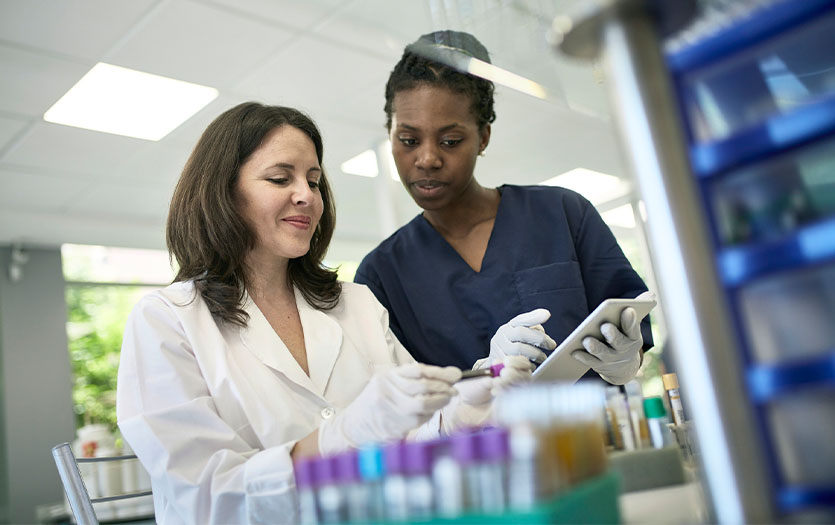
This post was written based on the appearance of Dr. James Edlund, medical director, PPG – Wound Care, Parkview Health, and Brooke Randol, CNS, PPG – Wound Care, Parkview Health, on the program PBS HealthLine.
Nonhealing wounds and ulcers are a significant cause of disability and death worldwide. Fortunately, many of these injuries can be treated effectively before they cause serious harm. In this discussion, we will explore some common causes of chronic wounds and how vulnerable individuals can reduce their risk of complications.
What is classified as a wound in the medical profession?
A wound is a disruption in the integrity and function of tissues in the body. We categorize wounds into two types: chronic and acute. Acute wounds generally heal within a few weeks to a couple of months and typically proceed in an orderly fashion through four phases of healing.
-
Stage 1: Hemostasis starts right after an injury and works to stop the bleeding.
-
Stage 2: Inflammation, such as pain and swelling, is the body's immune response to the injury. Though uncomfortable, this reaction is working to combat infection and create an optimal healing environment.
-
Stage 3: Proliferation involves the formation of new tissue, growth of blood vessels, and the development of skin cells.
-
Stage 4: Maturation is the development and strengthening of the final scar tissue. This stage may last months or years as the scar flattens and repigments as close to its original state as possible.
When this sequence is interrupted, it can delay the recovery process. An injury that does not heal within approximately 4-6 weeks is considered chronic and in need of medical intervention.
How do chronic wounds happen?
The majority of wounds treated at the Parkview Centers for Wound Healing are due to complications of diabetes or caused by venous or arterial insufficiency (poor circulation).
Diabetes can damage the nerve endings and blood vessels in the feet, making injuries less noticeable. A small skin problem like a callus, blister, or cracked skin can turn into a larger sore called a foot ulcer.
Venous insufficiency occurs when the veins in the legs do not return blood to the heart and upper body normally. This can cause fluid to pool in the legs, leading to swelling, and may also cause varicose veins. The added pressure and reduced blood flow can damage tissue and cause ulcers. Arterial insufficiency causes ulcers by reducing oxygen-rich blood flow to tissues, which can also lead to tissue death and open sores.
What happens if these wounds are left untreated?
Lack of or delayed treatment, especially regarding diabetic foot ulcers, can have severe consequences such as increased risk of amputation or loss of extremities. Other complications include:
-
Infection
-
Prolonged pain and discomfort
-
Limited mobility
-
Nerve and tissue damage
Preventing chronic wounds
To prevent chronic wounds from developing or returning, focus on these key areas:
-
Pressure injury: Move around frequently and avoid prolonged sitting or lying in the same position for too long.
-
Diabetic wounds: Keep blood sugar levels under control and inspect feet daily for any cuts or injuries. Use a mirror if needed to see the bottoms of the feet.
-
Venous leg ulcers: Compression therapy and elevating the legs can help improve blood flow and reduce swelling. Consider using over-the-counter compression socks or stockings when elevation isn't an option.
Keep in mind, chronic swelling is oftentimes recurrent and can be a symptom of another condition, like congestive heart failure.
Monitor your weight, and if you notice that you're starting to retain fluid or gain weight, get in touch with your primary care doctor before the swelling becomes so severe that the skin stretches so far that it blisters. Once this occurs, the rate of recurrence is much higher.
Find care
Healing acute and chronic wounds requires proper care and attention. The Parkview Centers for Wound Healing are focused on helping you recover so you can get back to the things you enjoy. Outpatient wound clinics do not require a physician referral. If you are dealing with a chronic wound or need additional information and support, contact any of our four locations for help.



